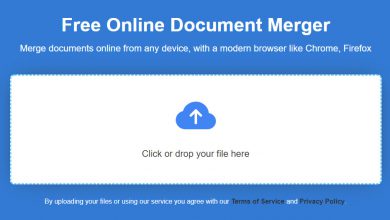
Many businesses completed mergers and acquisitions this year (M&A). In fact, nearly 30 mega-mergers and acquisitions occurred between May and August, including Microsoft’s acquisition of Nuance Communications, Apollo Funds’ acquisition of Verizon Media, Amazon’s acquisition of MGM, Celonis’ acquisition of Integromat, and many others.
Global M&A volumes have surpassed $4.3 trillion so far this year, for a variety of reasons, including larger businesses acquiring smaller competitors that aren’t performing well during difficult times, companies wanting to expand or augment their current product portfolio, or a company wanting to enter new markets.
Process Mining: The Key to Successful M&A
M&As are a complex project for everyone involved, including lawyers, HR, accounting, IT services, employees, and many other stakeholders.
The most difficult challenge, however, is for managers to connect two companies with different cultures and established business processes.
ABBYY has acquired several companies around the world in recent years, most recently Timeline PI in the United States and Pericom Singapore in Southeast Asia. We’ll break it down into three categories: resources, processes, and people, and talk about how process mining can successfully integrate businesses without causing profit losses, process bottlenecks, or employee attrition.
Resources
When it comes to M&As, it is not just legal entities that are acquired. Inherited buildings and equipment are acquired by IT systems, and the parent company will typically audit everything to determine which resources should be retained and which should be offloaded.
Evaluation technologies
However, when evaluating different technologies and generations of systems, IT leaders must ensure end-to-end business process continuity while integrating processes. And the sooner they begin, the better.
Meeting with stakeholders and manually mapping out the systems, applications, and known processes is a common approach. However, it is a time-consuming and expensive process that takes months. Another option is to use robotic process automation (RPA) software robots to automate the integration. Software robots mimic human actions in a computer interface while transferring data from one system to another.
However, robots can only function effectively in well-structured processes and have no idea which systems have been optimized for integration. Process mining and discovery tools are the key accelerators if the company needs the integration to be optimized faster.
Process mining platforms duplicate information about the execution of processes (digital traces) from corporate systems and build a model of the company’s processes, calculate metrics, assist in the discovery of optimization methods, and assist in the development of analytics for the start of digital integration and transformation. This ultimately aids in the streamlining of processes, the identification of bottlenecks, and the improvement of operational efficiency.
Enterprise Management System
Another application for process mining is as an Enterprise Management System (EMS), which does not necessitate extensive setup or coding. In this case, each linked system uploads its audit logs (or data from databases, custom data extracts, and so on) to the analytics platform.
The platform will register the occurrence of a business event that corresponds to a scenario, a set of conditions, and causes based on the actions recorded in them.
This is how it appears: Consider a chain of events from one end-to-end process that passes through two non-integrated systems from different companies, and the onset of a specific business situation necessitates the use of another system. Process mining provides visibility and alerting across a distributed system, allowing you to quickly establish interaction between different companies’ IT landscapes and ensure business continuity.
How the Enterprise Management System Works
Here’s how it might work at a car dealership that has purchased a carrier company that has its own fleet of car carriers. Perhaps the dealership is now offering a new service to customers in which they can transport cars to any location in the world, but this requires several different companies to collaborate and follow several steps. The following are some examples of steps that could be taken:
- To begin, each company has its own IT system, and each of them sends digital traces of transactions in various formats to a process mining platform. When a car dealer signs a preliminary contract with a client, the date of sale and shipment of the car to the buyer are determined.
- In the accounting system, a series of events occur for the analytical platform, including the determination of a preliminary contract and the completion of an advance payment.
- Then, in the dealer’s system, it is noted that the service of transporting the car to the destination is required, and the process of booking a car carrier for the desired delivery date range begins in the carrier’s system.
- When all payments are made, a trigger is triggered. The process mining platform in the carrier’s IT system can see the warehouse’s attributed address where the car is located, as well as a waybill for the driver.
Despite the fact that none of the systems in this example communicate with each other directly, the task is completed. All of this occurs at a time when businesses have yet to establish work in various divisions and businesses.
Processes
After integrating resources, it is critical to understand how the processes of the merged businesses flow. This is only possible if you have a thorough understanding of the organization’s data and business workflows.
This transparency can be achieved through intelligent business process analysis. Process mining shows you what a typical sequence of actions looks like in real-time when performing a specific task, such as signing a contract with a supplier or responding to a customer request in a call center.
These decisions allow you to identify deviations from the norm, who is making them, and how the process can be streamlined and improved.
Read Should your SEO team invest in SEO tools?
ERP system, a process common with M&As
Many companies, for example, have integrated all of their branches into a single ERP system, a process common in mergers and acquisitions, whereas others operate in several dozen countries around the world and use multiple ERPs of varying generations and manufacturers. This can make it difficult for equipment and assets to have consistent data reporting, making financial statements difficult to prepare.
Companies can explore different options for the same process and identify any deviations by using process intelligence to collect and correlate data from disparate systems.
People
There are several approaches to merging company cultures during a merger and acquisition. Autonomy is most commonly used when the new business is engaged in activities that are fundamentally different from those of the parent company and when the acquired enterprise’s processes are fully preserved. However, this option contradicts the concept of business consolidation. Customers frequently have no idea that two companies are part of the same brand.
Fully integrate the platform
The “roller method” approach fully integrates the parent company’s platforms, processes, and corporate culture. When the acquired company is much smaller than the parent, this is a fairly common and successful method, but it does not always result in good results.
There are numerous examples of failed mergers and acquisitions, ranging from Microsoft and Nokia to Google and Motorola to Daimler and Chrysler. Each case is unique, but they all have one thing in common: the new owner wanted to bring “his charter to someone else’s monastery” and quickly implemented his corporate culture, KPIs, and processes.
A New Business Model for Better Benefits
The third (and less common) method combines the best of both worlds: a new business is built from buyer and seller elements. It may appear to be more labor-intensive at first, but it can provide more benefits to both companies.
Furthermore, HR plays an important role in both methods. It is critical to maintain communication as employees integrate into the new system, sharing what opportunities and tasks await them as well as the limitations that exist.
Best Practices
Identifying best practices and determining which employees are the most productive is useful from the perspective of managers during an M&A. This is where task mining comes in handy. Task mining maps out how employees complete steps within a process and enables businesses to understand how employees use and interact with systems in order to improve productivity and optimize workflows.
Modern technologies like this one enable you to see the whole picture of what’s going on, including the conditions under which the task is performed, the cost of the process, and potential areas for improvement.
Conclusion
Many analysts believe that M&A transactions will increase in 2022 as companies look for ways to stay competitive. Those who acquire companies wisely based on understanding and carefully integrating resources, processes, and people will be the winners.
Need help with our free SEO tools? Try our free Plagiarism Checker, Paraphrasing Tool, Article Rewriter.
Learn more from SEO and read 22 Insightful Google SEO Tips for 2022.




